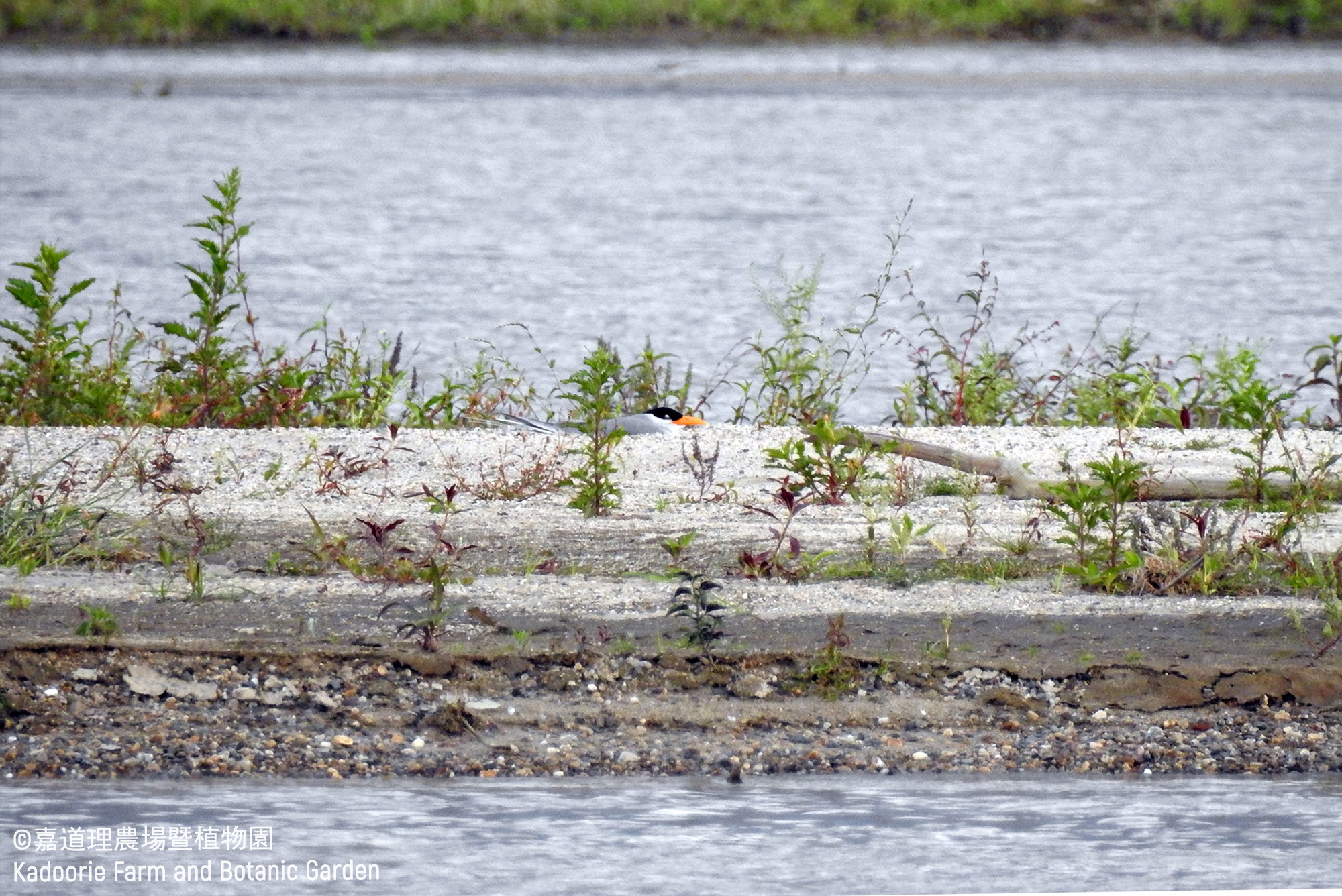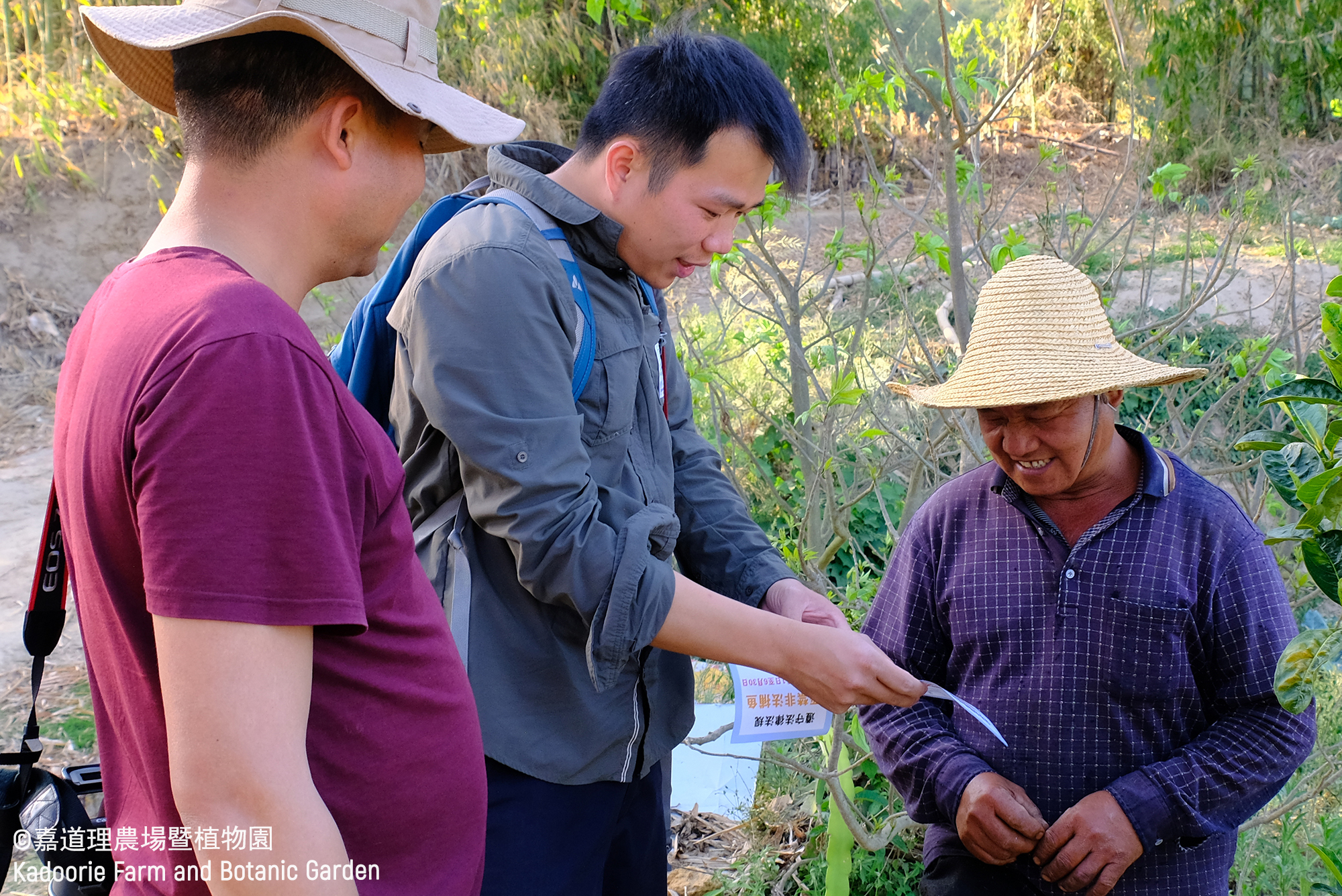Concerted efforts to protect China’s last River Terns proved successful Major threats mitigated and population doubled
(Hong Kong, 4 July 2019) Kadoorie Farm and Botanic Garden (KFBG) led a five‐month collaborative project to save the River Tern (Sterna aurantia), a bird species on the verge of extinction in China. Through conducting China’s first population survey and implementing multiple measures to protect its last breeding ground in China, our concerted efforts successfully helped double the tiny population of this imperilled bird from seven to 13 individuals.
On the brink of regional extinction
Although India supports a healthy population of more than 50,000 individuals, this species is heading towards regional extinction in Southeast Asia. Recent surveys recorded less than 100 individuals in the Mekong and Irrawaddy rivers, respectively, and it has likely completely disappeared from Thailand, Laos and Vietnam.
In China, the River Tern is also experiencing a precipitous population decline. In Yingjiang County of western Yunnan, its last refuge in China, only five individuals were recorded in 2018, down from 13 in 2014.
Dr. Bosco Chan, head of KFBG department Kadoorie Conservation China, says: “Although the River Tern is a Class II protected species in mainland China, it has slipped under the radar of conservationists, and is undergoing a silent extinction. That’s why we sounded the alarm and acted swiftly to save this iconic riverine species.”
China’s first River Tern survey
To devise an effective conservation plan, KFBG, Dehong Forestry and Grassland Bureau and other partners launched the nation’s first River Tern population survey this March along two major rivers in western Yunnan. The joint team only recorded seven individuals along the Dayingjiang River of Yingjiang County, but was thrilled to locate three active nests, providing a cause for hope.
A quest to protect the species’ last breeding site in China
The joint team implemented measures to mitigate a litany of threats that might devastate nesting attempts of the River Tern’s already critically endangered population in China.
1. Negotiated with an upstream hydropower company and relevant government departments to identify a safe water discharge volume that will not flood the nests;
2. Recruited three community nest protectors to halt human activities around the nests;
3. Reported illegal fishing activities around the nest sites during the fishing moratorium to ensure the species has abundant food;
4. Fenced off the nests to prevent predation by feral dogs and rodents, and trampling by buffalos;
5. Installed billboards, distributed leaflets, and hosted fun fairs to educate local communities;
6. Mobilized community leaders to cut off access to nest sites to exclude disturbances.
We are pleased that the project received ample support from the local governments, birdwatchers, and local communities. The Oriental Bird Club partly sponsored our effort. Our conservation work does not stop here. We will continue strive to secure a better future for River Terns by promoting it as a flagship species for the river ecosystem.
For media enquiries, please contact Ms. Cindy Luk, Communication Officer, at 2483 7270 or email media@kfbg.org.
Appendix 1: River Tern Fact Sheet
| Common name | River Tern |
| Species name | Sterna aurantia |
| Global Range | Afghanistan; Bangladesh; Bhutan; Cambodia; China (Tibet and Yunnan); India; Iran; Laos; Myanmar; Nepal; Pakistan; Thailand;Vietnam |
| Global Conservation Status |
|
| China Conservation Status |
|
| Habitat | Rivers and freshwater lakes |
| Breeding | Breeds on sandbars in rivers from February to May. Two to three eggs are laid each time |
| Diet | Fish |
| Threats |
|
Source: IUCN; Claassen, A.H. (2018). Ten‐year species action plan for the Cambodian population of River Tern Sterna aurantia, 2018‐2028. Phnom Penh, Cambodia
Appendix 2: Photos One of the last adult River Terns in China’s Yingjiang.
 Immature River Terns born in China’s Yingjiang this year.
Immature River Terns born in China’s Yingjiang this year. Dayingjiang River: The last breeding ground for China’s River Terns.
Dayingjiang River: The last breeding ground for China’s River Terns. Our joint team conducting China’s first River Tern survey.
Our joint team conducting China’s first River Tern survey.

River in Yunnan Province.One of the three nests found by the joint survey team along Dayingjiang.

One of the nest protectors, Mr Yue, monitors newly‐fledged River Terns as they learn to fly and hunt.

Our team race against time to fence off the nest to keep predators at bay and increase breeding success.

Our team distributing leaflets to local villagers to raise awareness of River Tern conservation.

Educational billboard erected near a River Tern nesting site.
Students learn about the ecology and conservation of waterbirds of their home, including the River Terns, at a school fun fair organised by KFBG.

